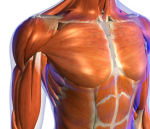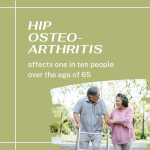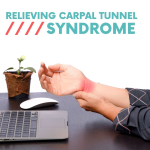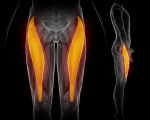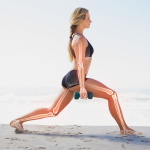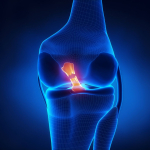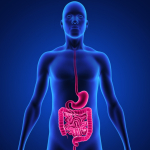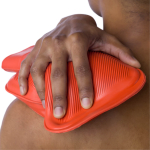Lymphatic Drainage, Myofascial Release, Dry Needling, Remedial and Sports Massage Treatment Service at Back in Business Physiotherapy
We incorporate these services into our physiotherapy treatment regimes. This is why our treatments take 40 minutes of 'hands-on' management. Such treatment is complimented by exercise prescription to obtain a lasting result.

A review in 2021, described massage as mechanotherapy that can provide skeletal muscle improved recovery after exercise and sport by combating atrophy through it's affects on protein and ribosome turnover, extracellular matrix (ECM) turnover, satellite cell proliferation and immunomodulation (Van Pelt DW et al 2021, Ex & Sp Sc Rev, 49, 2, 107-114).
A rabbit animal model of eccentric exercise was used, where muscle architecture was examined 5 days post exercise, comparing the massaged to non-massaged tibialis anterior. The rabbits without massage, demonstrated severe damage, including widening of the endomyseal space between myofibres, disruption of myofibrillar membrane, damage within myofibres and a large infiltration of inflammatory cells. This was in stark contrast to those muscles which had been massaged (Butterfield TA et al 2008, Med Sci Sp Ex, 40, 7, 1289-1296). Peak torque in the massaged muscles was 4 times that of the unmassaged and moreover, optimal recovery occurred in muscles massaged immediately post exercise.
Massage improves recovery of muscle mass after disuse atrophy. Here a rat model of 2 weeks of hindlimb suspension was used, where 8 days after suspension, the rats who had been massaged demonstrated greater cross sectional muscle mass compared to those that hadn't. (Miller BF et al 2018, J Physiol, 596, 1, 83-103)
Massage has an immunomodulatory effect in skeletal muscle. An abundance of of CD68+ and CD163+ immune cells responded in a dose/force dependent manner (Butterfield et al 2008) In humans, exhaustive cycling ergometer exercise was used to examine the difference between Vastus Lateralis in the 10 minutes of massaged compared to the unmassaged limb. The massaged limb demonstrated reduced TNF-alpha, IL-6 and Nuclear Factor (p65) - all the hallmark of inflammatory markers. In addition it reduced the elevation of Heat Shock Protein (HSP) 27, a marker of cellular oxidative stress response ((Crane et al 2012 Sci Trans Med, 4, 119).
Muscle mass is a balance between protein synthesis and degradation. Massage applied during the reloading phase of training resulted increased protein synthesis compared with reloading alone. Rate of protein synthesis is attributed to the translational efficiency and capacity of ribosomes. Some evidence suggests the value of massage during disuse to attenuate ribosomal degradation.
Integrins of the ECM are a critical response to resistance training. Massage may have a mechanical effect on these integrins which plausibly could lead to mechanosensitive anabolic signalling Additionally, stem cells are known to be mechanosensitive, which may explain the proliferation of stem cell activity in massaged muscle, during muscle recovery, in both healthy muscle and after disuse atrophy (Hunt et al 2019, Physiol Rep, 7, 17, c14200). .
Crossover effect of massage impacts contralateral non-massaged homologous muscle has been a clinical myth. In terms of neurophysiology, there is evidence of transcortical inhibition when it comes to physical activity. However, it is plausible that massaging one area of the body stimulates a myokine or extracellular vesicle response. Certainly, Jay Shah has demonstrated movement of fibroblasts along the myofascial membrane, which presumably is a mechanism for moving substances needed for 'rebuilding' and 'regrowth' from area of the body to another. It's also one of the suppositions upon which myofascial train therapy construct validity is based upon.
Massage in aged skeletal muscle may play a significant role both post exercise as well as after disuse atrophy for the reasons outlined previously. Moreover, in the rat model, aged muscles demonstrated a unique heat shock protein response involving HSP-25, HSP-70 and cold shock protein RBM3 (Van Pelt DW, et al 2019, J Appl Physiol, 127, 6, 1782-91), which have all been considered as important substances for the avoidance of apoptosis in the mitochondria of myofibres.
Also see Fascial Manipulation elsewhere on this site
and Trigger Point Therapy/Dry Needling
The lymphatic system is a part of the circulatory system, comprising a network of conduits called lymphatic vessels that carry a clear fluid called lymph (from Latin lympha "water goddess") unidirectionally towards the heart. The lymphatic system was first described independently by Olaus Rudbeck and Thomas Bartholin. The lymph system is not a closed system. The circulatory system processes an average of 20 liters of blood per day through capillary filtration which removes plasma while leaving the blood cells. Roughly 17 liters per day of that gets reabsorbed directly into the blood vessels. The primary function of the lymph system is to provide an accessory route for these excess 3 liters per day to get returned to the blood. So lymph is essentially recycled blood plasma.
Secondly the lymphatic organs play an important part in the immune system, having a considerable overlap with the lymphoid system. Lymphoid tissue is found in many organs, particularly the lymph nodes, and in the lymphoid follicles associated with the digestive system such as the tonsils. The system also includes all the structures dedicated to the circulation and production of lymphocytes, which includes the spleen, thymus, bone marrow and the lymphoid tissue associated with the digestive system.
The blood does not directly come in contact with the parenchymal cells and tissues in the body, but constituents of the blood first exit the microvascular exchange blood vessels to become interstitial fluid, which comes into contact with the parenchymal cells of the body. Lymph is the fluid that is formed when interstitial fluid enters the initial lymphatic vessels of the lymphatic system. The lymph is then moved along the lymphatic vessel network by either intrinsic contractions of the lymphatic passages or by extrinsic compression of the lymphatic vessels via external tissue forces (e.g. the contractions of skeletal muscles). Eventually, the lymph vessels empty into the lymphatic ducts, which drain into one of the two subclavian veins (near the junctions of the subclavian veins with the internal jugular veins).
Manual lymph drainage uses a specific amount of pressure (less than 9 ounces per square inch) and rhythmic circular movements to stimulate lymph flow. It is now recognized as a primary tool in lymphedema management. Lymphatic drainage is frequently used post operatively after radical mastectomy for breat cancer, as well as more benign diseases such as acute or chronic swelling. It can also be used to enhance the immune system.

Source of information on Lymphatic System is from Wikipedia
Updated : 28 October 2021

















